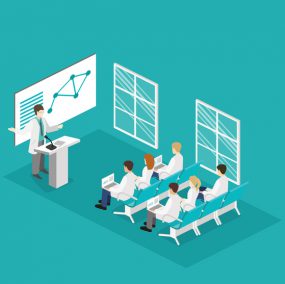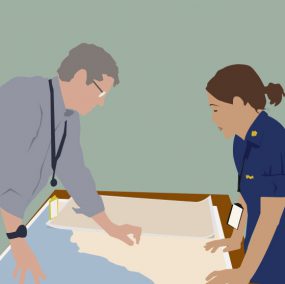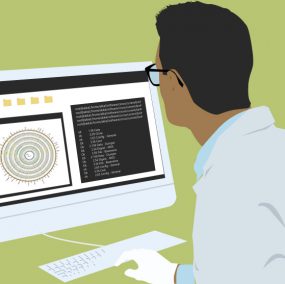Building AMD Capacity at CDC
A 2011 panel of independent scientists assessed CDC’s sequencing and bioinformatics capacity. This panel found that the nation’s premier public health agency was sorely lacking in state-of-the-art technologies. One panel member even commented that “junior colleges have more sequencing capacity.” This was a call to action that got the nation’s leaders interested in helping CDC get up to speed on these technologies. And the cross-cutting AMD program has made leaps and bounds since its inception in 2013.

For AMD to be successful, the nation needs a workforce adept in pathogen genomics. As the AMD program began, many in the public health laboratory workforce in the United States had completed their training before genomics was such a prominent field within microbiology. To address this knowledge gap, the AMD program partnered with the Georgia Institute of Technology to bring CDC’s laboratory staff members up to speed on sequencing and bioinformatics. As the program expands beyond CDC, the agency has begun to provide funding through the Epidemiology and Laboratory Capacity (ELC) Cooperative Agreement to establish regional training networks at state and local health departments. This approach is designed to boost genomics expertise in these departments while strengthening their ties with local universities.

Epidemiologists routinely analyze and interpret data from outbreak investigations. Before AMD, few had experience incorporating genomic data into those investigations. Through the AMD program, CDC professionals developed a course to introduce epidemiologists to AMD, with a focus on how to work with DNA data obtained through genomic sequencing. In 2017, CDC partnered with Cornell University and the Food Safety Centers of Excellence to expand this course into an online version for state and local epidemiologists. CDC also collaborated with the Council of State and Territorial Epidemiologists (CSTE) to offer a workshop on molecular epidemiology to state epidemiologists at the CSTE annual meeting in 2017. To continue to expand state epidemiology capacity, CDC has partnered with Cornell University and the Food Safety Centers of Excellence to expand this course into an online version for state and local epidemiologists.

Because bioinformatics is a specialized field, CDC competes against biotechnology companies for graduates with extensive training and experience in bioinformatics. But CDC partnered with APHL to create a fellowship program to encourage these high-demand professionals to spend 1 – 2 years working on AMD projects. And many recent masters- and PhD-level graduates have jumped at the opportunity to apply their skills to real-world public health problems. In addition, the AMD program, in partnership with the Georgia Institute of Technology, developed training programs for internal staff to build their bioinformatics skills. Through this multi-pronged approach of developing internal staff and recruiting external professionals, CDC increased the number of bioinformaticians from fewer than a dozen before 2013 to almost 60 after just three years.